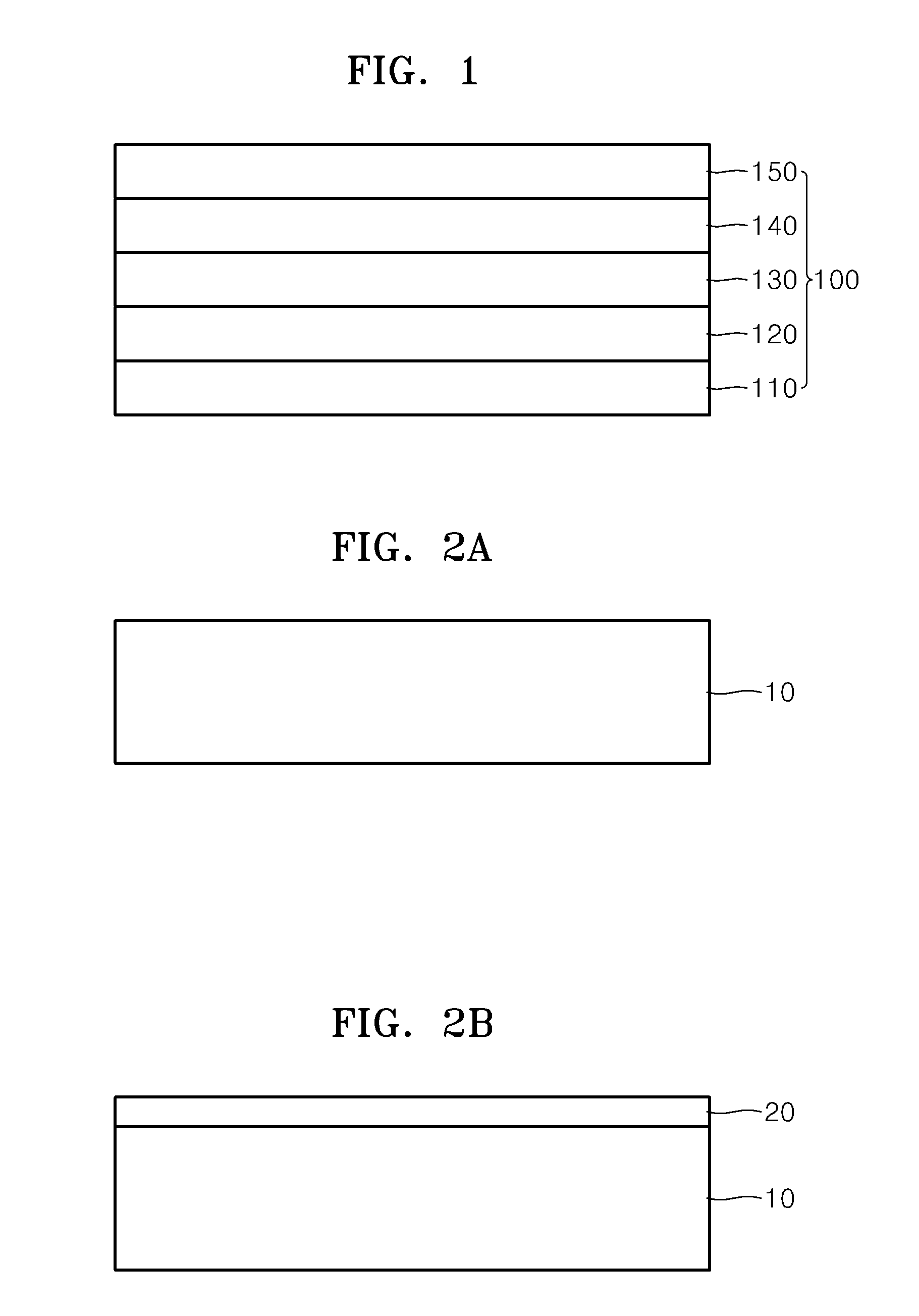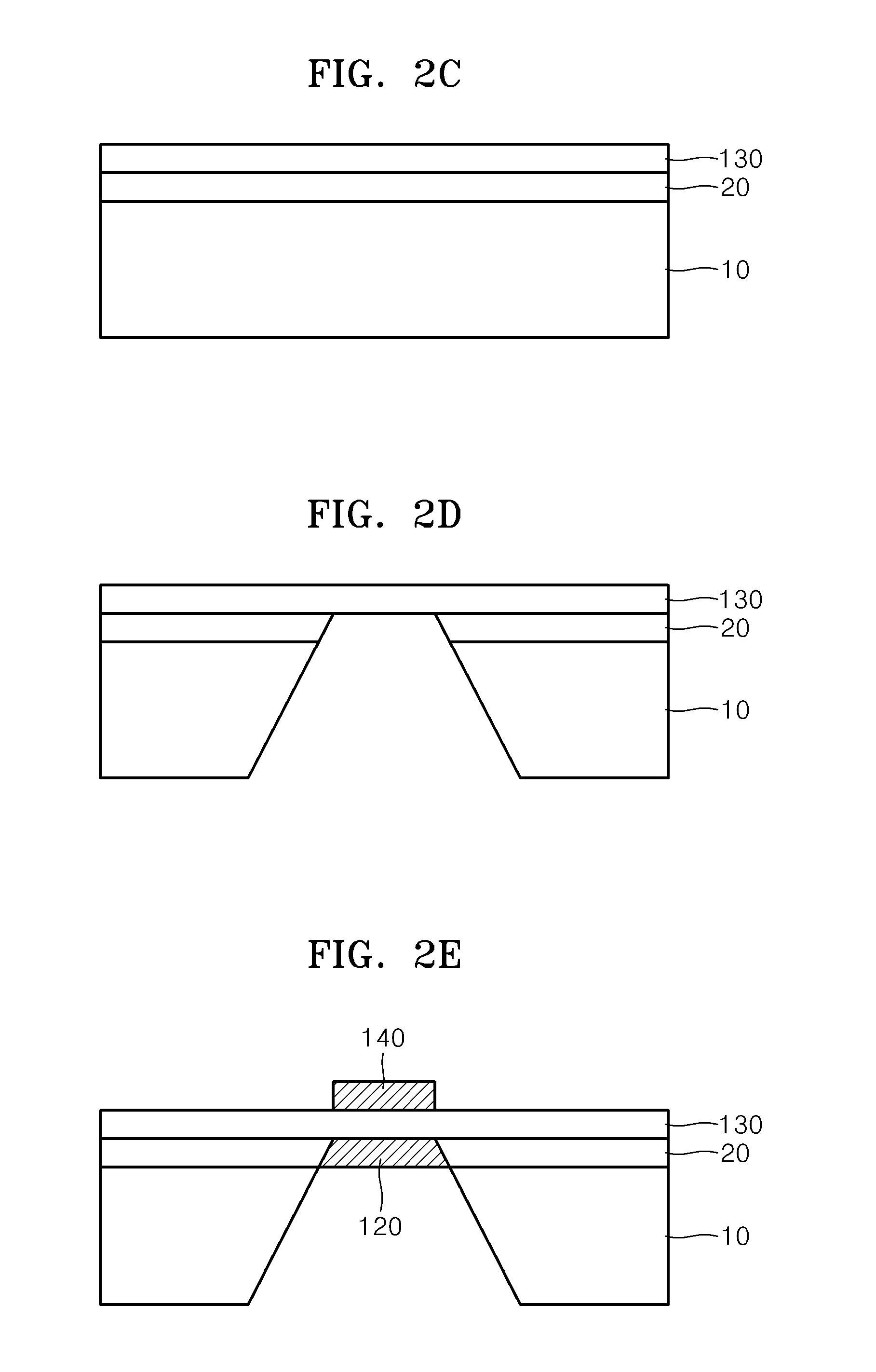Proton conducting electrolyte membranes having nano-grain YSZ as protective layers, and membrane electrode assemblies and ceramic fuel cells comprising same
a technology of proton conducting electrolyte and protective layer, which is applied in the direction of cell components, final product manufacturing, sustainable manufacturing/processing, etc., can solve the problems of low compatibility, slow initialization of high-temperature fuel cells, and high difference between operating temperature and starting temperature, so as to achieve high compatibility
- Summary
- Abstract
- Description
- Claims
- Application Information
AI Technical Summary
Benefits of technology
Problems solved by technology
Method used
Image
Examples
preparation examples 1 through 3
[0079]In order to verify proton conductivity of nano-grain YSZ (8 mol % Y2O3-stabilized ZrO2), the change in deuterium concentration according to thicknesses of YSZ layers was analyzed, wherein the YSZ layers include nano-grain YSZ thin layers (thickness: about 100 nm) each having an average crystal grain size of about 25 nm that are deposited by using ALD (Preparation Example 1) and PLD (Preparation Example 2), and a micro-grain YSZ thin layer (thickness: about 500 μm) having an average crystal grain size of about 10 μm formed by using sintering (Preparation Example 3) on a Si3N4 layer having a thickness of about 100 nm formed on a Si wafer having a thickness of about 350 μm.
[0080]The nano-grain YSZ thin layer according to Preparation Example 1 was deposited by carrying out the following processes in a reaction chamber:
[0081](1) A Si3N4 substrate maintained at 250° C. was exposed to tetrakis(dimethylamido)zirconium (heating temperature of 75° C.) gas in a reaction chamber,
[0082](2)...
example 1
[0095]A silicon nitride layer having a thickness of about 100 nm, as an etch-stop layer, was deposited on a silicon substrate heated to about 800° C. by using low pressure chemical vapor deposition (LPCVD) (FIGS. 2A and 2B).
[0096]A proton conducting solid oxide electrolyte thin layer (BYZ; Y:BaZrO3) was deposited to a thickness of about 100 nm on the silicon nitride layer (FIG. 2C).
[0097]A predetermined area of the back side of the silicon substrate was exposed by using photolithography and then the silicon substrate was impregnated with 30 weight % of a KOH solution for about 4 hours, thereby first removing the silicon substrate. Then, the exposed silicon nitride layer was removed by using drying etching, in which SF6 and O2 were used, in a reaction chamber, thereby exposing the back side of the BYZ ceramic electrolyte layer (FIG. 2D).
[0098]ALD, in which the following processes were repeated, was performed on the obtained silicon substrate in a reaction chamber and thus the nano-gr...
example 2
[0101]A MEA was manufactured as in Example 1, except that the anode side ceramic protective layer 120 and the cathode side ceramic protective layer 140 each including a nano-grain YSZ having an average crystal grain size of about 25 nm and a thickness of about 5 nm were formed by using PLD, instead of using ALD:
[0102]In a reaction chamber, in which the inside of the chamber was evacuated and then the oxygen partial pressure was adjusted to about 100 mTorr, KrF laser having pulse energy of 3.0 J / cm2 was beamed toward a YSZ target so as to form a YSZ plasma. Then, the nano-grain YSZ thin layer was deposited on a silicon substrate that was spaced apart from the target by 6.5 cm and was maintained at 400° C.
PUM
| Property | Measurement | Unit |
|---|---|---|
| crystal grain size | aaaaa | aaaaa |
| crystal grain size | aaaaa | aaaaa |
| temperature | aaaaa | aaaaa |
Abstract
Description
Claims
Application Information
 Login to View More
Login to View More - R&D
- Intellectual Property
- Life Sciences
- Materials
- Tech Scout
- Unparalleled Data Quality
- Higher Quality Content
- 60% Fewer Hallucinations
Browse by: Latest US Patents, China's latest patents, Technical Efficacy Thesaurus, Application Domain, Technology Topic, Popular Technical Reports.
© 2025 PatSnap. All rights reserved.Legal|Privacy policy|Modern Slavery Act Transparency Statement|Sitemap|About US| Contact US: help@patsnap.com



